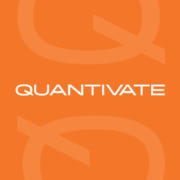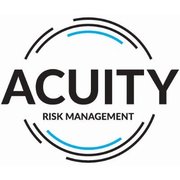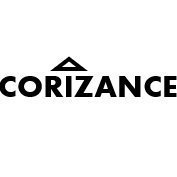Vendor Risk Management Software
Best Vendor Risk Management Software include:
BitSight Security Ratings, SecurityScorecard, Nexis Diligence, Avetta One, D&B Risk Analytics, UpGuard Vendor Risk, Whistic, CanQualify, CyberGRX and Venminder.
All Products
(26-50 of 105)
Explore recently added products
Learn More About Vendor Risk Management Software
What is Vendor Risk Management Software?
Vendor risk management (VRM) software collects and streamlines the management of vendor risk data to protect businesses against supply chain vulnerabilities, data breaches, and compliance issues. This type of software onboards suppliers and evaluates, monitors, and minimizes risks that could negatively affect a company’s vendor relationships.
These technologies, sometimes known as third-party risk management (TPRM) or IT vendor management software, are most relevant to companies that use third-party suppliers or data providers. VRM software helps companies reduce the risk of external supply disruptions caused by undependable vendors.
The primary function of vendor risk management software is to provide workflows and documentation to streamline or automate risk management operations. The vendor risk assessments that an organization’s suppliers or other vendors fill out are a key feature of this function. VRM software generates a supplier ranking and risk classification system based on these assessments. These systems can be customized to fulfill various corporate requirements, including regulatory compliance and business disruption planning.
Data breaches, data loss, and human error are all hazards of using digital technologies. With the rapid expansion of technology, supply chain vulnerabilities are a growing concern due to their upstream ripple effect. Companies must be diligent in defending their privacy, operations, and reputation while regulations and laws are still catching up. VRM technologies make the process of organizing, optimizing, and securing supply chain relationships easier for businesses as they navigate and interact with a world of supply chain providers.
Vendor risks commonly fall into three categories: legal and regulatory, financial, reputational, and operational. Legal teams and compliance officers use vendor risk management software to ensure that corporate policies and federal regulations such as FFIEC, CFPB, and HIPAA are met. Procurement specialists and managers from IT, manufacturing, quality management, and supply chain management departments use vendor risk management software to mitigate security and operational risks.
Vendor risk management software often overlaps with data privacy management software and governance, risk, and compliance (GRC) software. Each category emphasizes risk management for regulatory compliance and business impact purposes. However, each category of software also varies in its specificity and scope. Vendor risk management software will also often integrate with supply chain software, CRM tools, or ERP platforms to facilitate other supplier management processes.
Vendor risk management software is solely focused on the management and accounting for third-party vendor risk. In contrast, governance, risk, and compliance (GRC) software is designed to manage risk more broadly across the organization, particularly internally.
Vendor Risk Management Software Features
Vendor risk management (VRM) software typically includes the following features:
- Alerts/notifications
- Audits and compliance management
- Automated deadline rules
- Collaboration tools
- Configurable process library
- Dashboard and reporting
- Document management
- Email triggers and notifications
- Issue management
- Monitoring and testing
- Processes and templates
- Quantitative data
- Regulatory compliance tracking
- Risk identification and assessments
- Supplier dashboards
Vendor Risk Management Software Comparison
When comparing vendor risk management (VRM) software, consider the following:
Assess pain points and risk types first. Before shopping, comparing and setting up demos with VRM vendors, first--assess current pain points. Determine where, why, and how your current risk management strategies are failing. Also, consider the types of vendor risks that are most important to your organization. Some common risk types include:
- Data security
- Regulatory compliance
- Reputation
- Legal
- Exposure
- Geolocation factors
- Upstream and downstream stability
Expense and value. While it’s true that “you get what you pay for” in a VRM solution, most startups and small businesses will not be able to afford the best VRM options. Look for options that offer flexible pricing, automated processes, and crowdsourced access to legal experts to maximize value.
Standalone vs. Add-on. Vendor risk management (VRM) software is typically a specialized component of a broader governance, risk, and compliance (GRC) program, but it can also be used as a stand-alone solution. A standalone solution may be necessary for certain situations where data security is very high. However, if utilized as a standalone, the VRM application must be connected individually with other applications such as GRC, ERP, QA, and supply chain management software.
VRMs may come as part of a purchased software bundle or be added to current legacy systems already in place. Check with your existing GRC and other systems to see if an add-on option for VRM already exists.
Start a Vendor Risk Management Software comparison here
Pricing Information
Vendor risk management software is generally quite expensive. Most products on the market are priced per year, and the overall cost depends on the level of features. Basic plan pricing ranges from $70 - $400/yr for small businesses. Higher-tier plans range from $400-$10,000/yr for midmarket and $10,000+/yr for enterprise-level services. Vendors may include additional features such as active directory integration, unlimited users, and detailed auditing for enterprise or higher-priced premium packages.



























